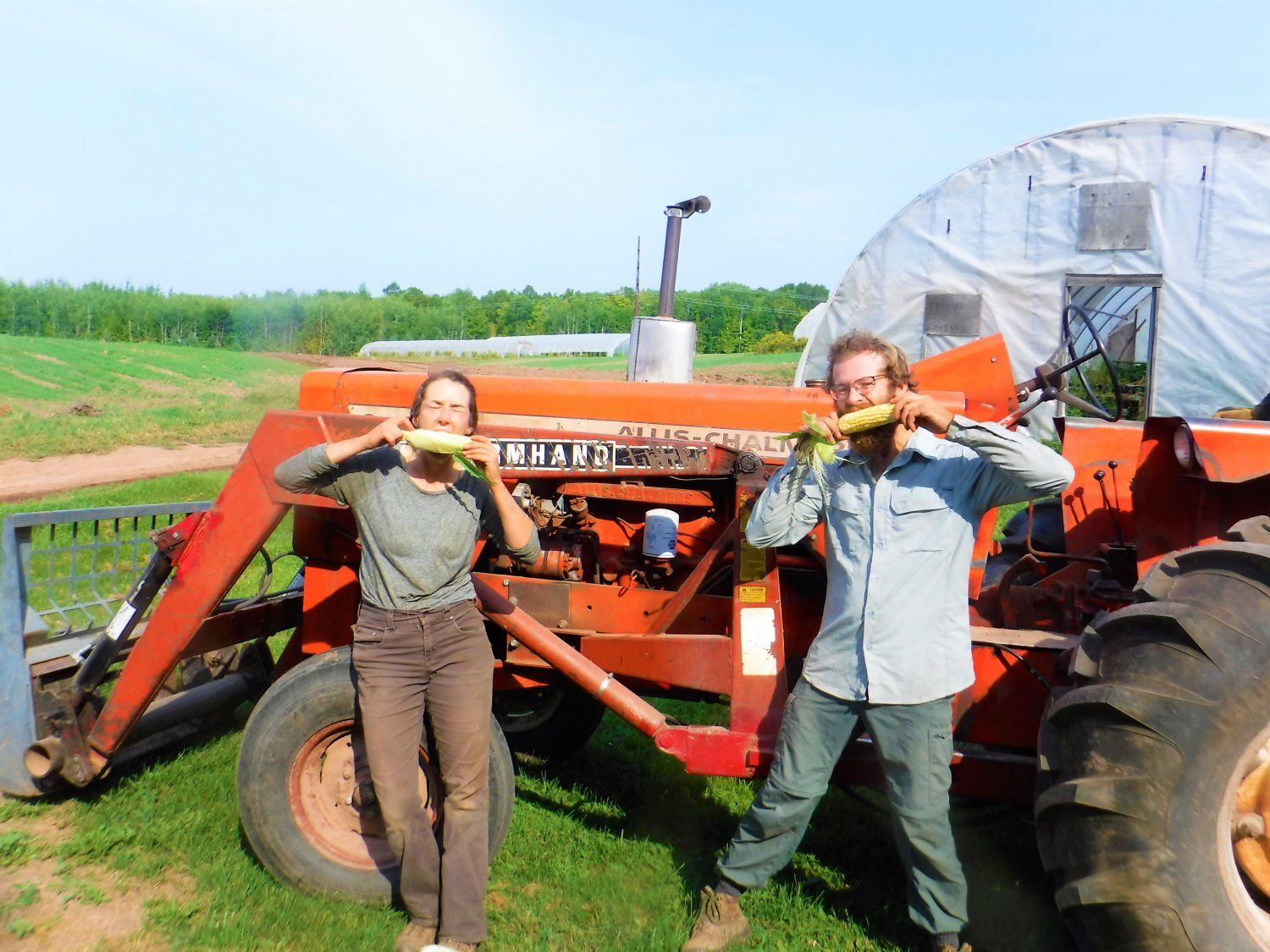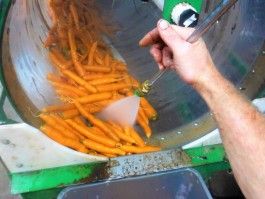27,154. That's how many gallons of water each acre of produce needs for optimal growth each week. Combined together, our fields of produce ideally need a little over 400 THOUSAND gallons of water each week. Sounds like an insane amount of water, doesn't it? Luckily, an inch of rain will supply 27,154 gallons of water on an acre of land. One inch of rain is all it takes.
Over the last few years, we've been aggressively cover cropping to build soil organic matter, which acts like a sponge to hold on to soil moisture when it rains, so our fields have a "water reserve" so to speak. This year, without much rainfall, we've relied heavily on that soil moisture reserve to keep our crops in good shape. Hopefully, we get good gentle rains this weekend like the forecast is calling for, because our water reserve is about ready for a refill. It's dusty dry down deep in the soil now.
This past weekend, parts for our irrigation system began to arrive, including this brand new pump. I can hardly wait to unwrap it! By the end of this fall, we'll have an irrigation system set up and laid out that will allow us to irrigate most of our fields with water from our farm pond.
As of right now, our pond will only hold about 2-3 weeks worth of water if we were to water the entire farm each week, so we'll have to be strategic about using it so we don't run out of pond water too fast. But having the ability to water crops at key times in their growth cycle is pretty darn cool.
And with this new pump, we'll be able to put out 160 gallons per minute - that's right, 160 gallons PER MINUTE?! - so we should be able to put some good water down in a hurry next year. I think this is one of the most exciting pieces of equipment that we have invested in for a while now. Overall, the system will cost more than our main field tractor which we use on a nearly daily basis. We won't use this irrigation system nearly as frequently, but when we need water, we'll have an option in the coming years. Security is worth a lot I suppose.
And now for some good news to share: summer carrots are finally here! The drought this summer has really caused them to stretch out nice and long to look for moisture, so while they took a little longer than usual to size up, they look great. And they taste even better than they look! We should have 2# bags of carrots available each week for the rest of the summer now.
Good tasting, local carrots are something my family looks forward to as much as good tasting, local tomatoes. The variety grown by the huge California carrot growers is bred to grow long and straight, with a solid core that facilitates mechanical harvest. We, on the other hand, choose to grow varieties that taste good. It's hardly a wonder why many people "don't like" veggies when much of what is available at the grocery store was grown for characteristics that favor some part of the handling and processing instead of great flavor.
Here you can see how we wash the carrots up after we dig them out of the ground in our barrel washer. The barrel slowly tumbles the dirty carrots around, while small jets of water spray the carrots off. We polish them up a bit more with a pressure washer at the end, and it makes for a pretty efficient washing system.
But wait, there's more! Thursday was our last day working with Farmer Sean here at Great Oak. He was unexpectedly given an incredible opportunity to teach music at a nearby school, which is something he has been dreaming about for a long time now. Sometimes the stars align, and you gotta take the leap. We had a delicious, local lunch on Thursday to send him on his way: a Heritage Farm pork roast that spent about 10 hours in the smoker, and lots of veggies from our fields, including some sweet corn on the grill, steamed green beans with butter, and fresh melon from our melon trial field. We'll sure miss working with him and his infectious smile - I hope those kids realize what a great guy they have as a music teacher next week.
This week, we'll have a few of those melons available for you to try in your CSA boxes. They are incredibly sweet - melons really like dry weather, and we've had quite the dry spell. Wet weather makes them taste pretty bland and mushy, but dry weather like this is melon perfection. They vary wildly in size based on variety, so we have several size classes of melons available. The small or medium sizes (under 2.5# and 2.75# respectively) are nice for smaller households, while the large and extra large are better for bigger households or melon lovers (approximately 3.25# range to 4+# range, respectively.)
.JPG)
Finally, a reminder now that we are in sweet corn season (yum!) As organic farmers, we don't use synthetic chemicals to kill pests in our crops, including really difficult pests to control like corn ear worms. We DO use a biological bacteria called bacillus thurengiensis (also called bt) that only affects caterpillars (including these ear worms) and it does a pretty good job, but even still it's tough for that bacteria to get inside the corn ears and get after those caterpillars. The bt comes as a powder, and we mix it with water to get good coverage on the crops with our sprayer. Below you can see how we apply that bacteria with a boom sprayer behind the tractor. It's actually kind of a fun process to conceptualize. I like to think we're unleashing a giant pack of little bacteria to go racing through our corn and chase down those worms. Go get 'em, little bacteria!
As that bacteria is a biological means of control, it doesn't persist in the environment very long at all. If the bacteria doesn't quickly find a host to feed on, it can't survive and breaks down. Also, it is just washed off when it rains, so we have to apply multiple times a season to keep bacteria populations high enough to get good control. While we do our best to keep those ear worms at bay, occasionally they slip through our defenses, and you might see a caterpillar in the tip of your corn ear. Good news - that ear is still fine to eat! Just trim off the tip that the caterpillar fed on and enjoy the rest of the ear. And rest assured knowing what you see is what you get - no hidden, nefarious synthetic chemicals lurking in your food. Caterpillars can be trimmed out and washed off. Synthetic chemicals, not so much.
That's it from the farm this week. And even if it might wreck your plans, keep your fingers crossed for rain all weekend long. We sure need it.
In community,
Farmer Chris
Great Oak Farm
PS - 3 weeks and counting until our average first frost. Enjoy all of those heat loving crops like peppers and tomatoes while you still can! Also, in case you have been rushing to eat the peppers before they get soft, we've been letting the peppers dry off before we bag them lately, and it seems to help them keep longer. Plus, it sure is a pretty sight!

.JPG)
.JPG)
.JPG)
.JPG)
.JPG)



